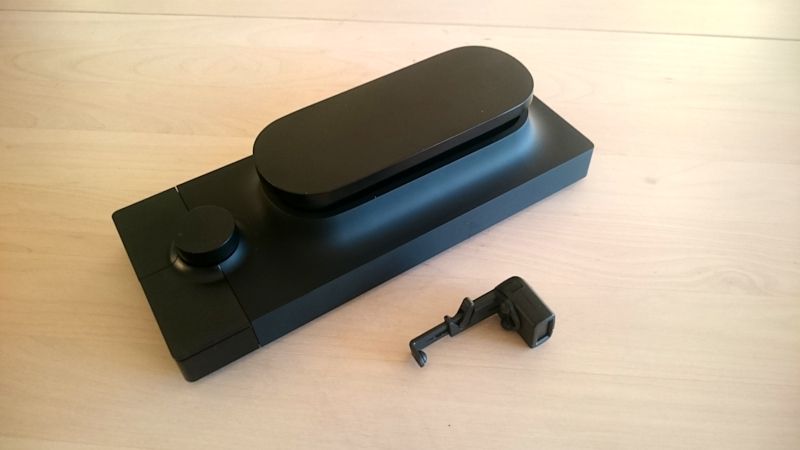Hardware!
Setup
Lié takes a very, very, VERY long time to scan plugins! Orders of magnitude slower than Cubase or Cantabile. (OK, I may have a few plugins installed…)
After that, it works… Sort of. I see what they mean by the Windows softare being broken. Lié/Windows seems half finished, has some “flat designitis” issues, and showing the plugin GUI just doesn’t seem to work at all, so there will be no synth editing inside Lié. Not cool. Of course, installing firmware and configuring MIDI CCs on the device seems to work, and that’s all I wanted anyway.
First impressions
Yes, this is a musical “instrument” that one needs to learn to play, and yes, having played cello, violin or similar might help a bit. To make proper use of this device, you’ll need to come up with some different finger/hand/arm techniques, in order to play smooth swells, tremolos, percussive envelopes and whatnot, in a consistent, controlled, and expressive fashion.
Playing technique
Smooth swells and sustained notes can (obviously) be played with the whole hand on the pad, and the sensitivity set to low. This is where it basically works as a (very good, but still) two-axis modwheel.
However, you can still create smooth output with higher sensitivity settings, if you use your relaxed fingers a soft suspension buffer, and do the actual work with the weight of your arm - very much like violin bow technique! The upside of that technique is that you can now combine these smooth swells with percussive finger tapping techniques for very sharp transients, or “multi-finger” taps for more rounded “thuds.”
Another upside of the “soft fingers” approach is that you can now apply something a bit like cello vibrato, or violin arm vibrato, to create smooth tremolo effects. Large, easy to control motions of the arm are transformed into controlled pressure variations at the fingertip(s), which allows you to “overlay” tapping, sliding etc while doing this.
Another trick for smooth swells is to slide your fingers along the pad, instead of varying the weight/pressure. Since the pad has one axis in each end, that will “crossfade” between the two. Combined with thumb/finger tapping, I can see some serious live dubstep wubbage happening this way. Or maybe overblown jazz flute.
Initial conclusion
This thing will require some experimentation and training to come up with practical playing techniques, but the expressive potential is HUGE - probably way beyond that of breath controllers. It’s perfectly possible to just disable the envelopes and LFOs of a synth and play anything from smooth swells through rhythmic patterns with 32nd notes directly instead. It’s tricky and unforgiving at first, but I believe that’s where the true potential of the Touché begins, and I’ve just barely scratched the surface.
Sidenote
I want all of UVI’s stuff! Naturally, Falcon 2 for the occasional advanced sound design adventure, but Whoosh FX is THE tool I would have wanted for The Captain, and Relayer looks like my next go-to delay. I’ve been using STA Delay for that progressive tube warmup of the feedback, but it doesn’t really do much more than that. Relayer does everything, and then some.




